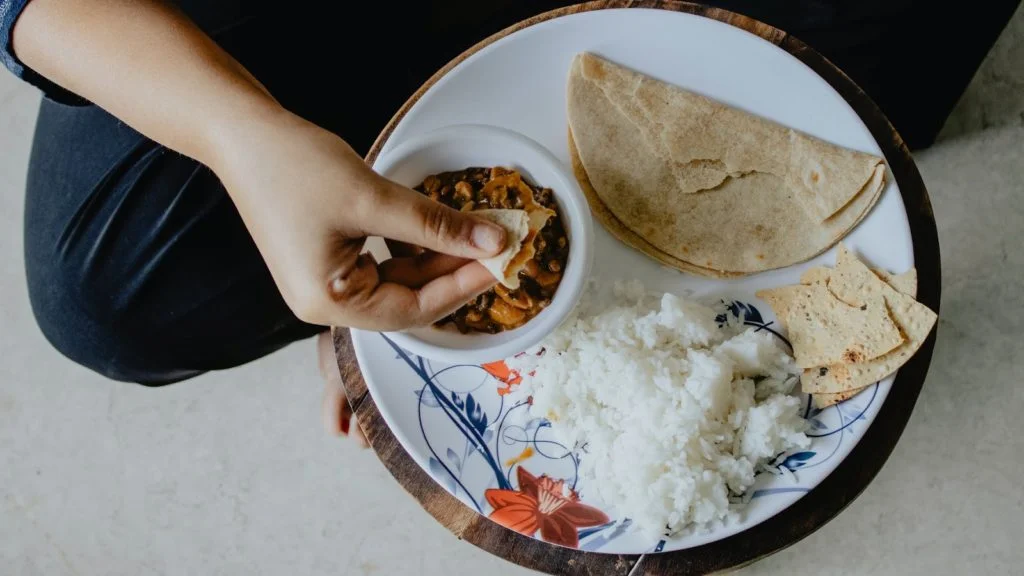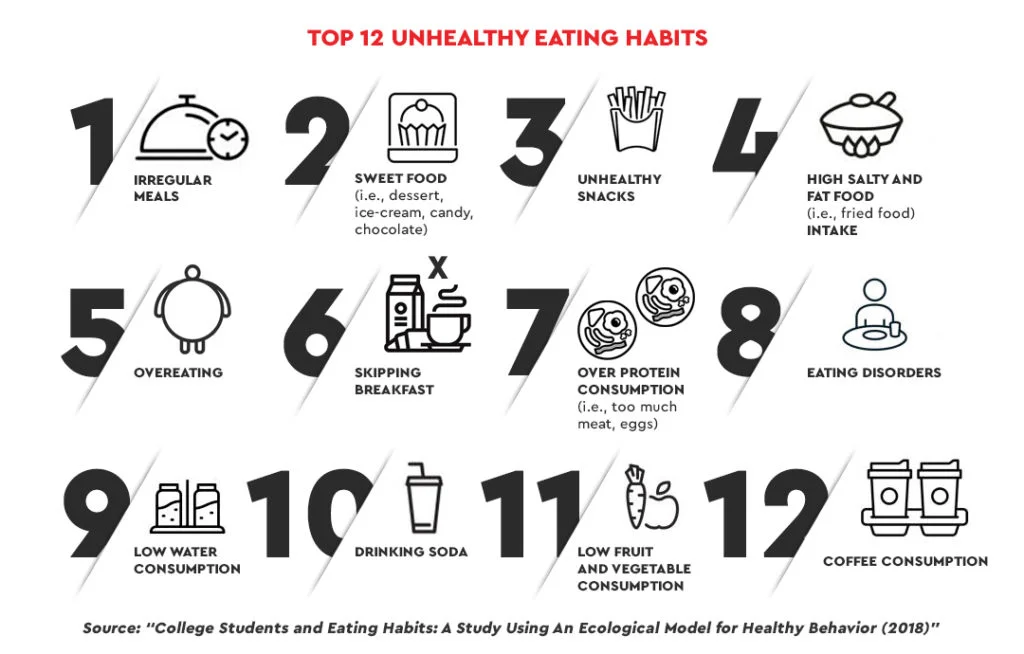
Most research work on international students usually revolves around their concerns in relation to their studies, career paths or relationship with their respective higher education institutions. These days, most especially in the midst of a pandemic, studies on mental health are gaining attention with many people suffering from depression and anxiety. This article tries to explore more on international students’ physical health, specifically, about their diets and food choices, and dwell on the concept of cooking while studying abroad.
Key Points at a Glance
- International students love to prepare, eat food from their home country. However, the demanding hours of study may discourage them from preparing what they consider as “healthy food”
- Healthy eating is often linked to better student performance
- A healthy eating behavior is achieved by students willing to eat healthier and educational institutions supporting their students with healthier food alternatives
- There is an ongoing food insecurity issue among college students in the United States
In a January 2018 study, Nova Corcoran, senior lecturer at the University of South Wales, United Kingdom, published a study aiming to explore the food choices of international students situated outside of an urban setting. The results published in the study make for interesting data as it was done well before the COVID-19 pandemic.
Corcoran agrees that, at least in the United Kingdom, research linking international students and food choices receive “limited attention.”
“Food is an integral part of the environment and culture of a host country,” Concoran said. In his study, the students come from Nigeria, Libya, Ghana, Somalia, the Philippines, Pakistan, and India.
The results of the study confirmed that international students choose to continue to eat traditional food from their home countries.They also refer to traditional recipes as healthier food alternatives.
However, this is highly dependent on time and resources. Sometimes, meal plans are skipped due to the lack of preparation time in connection with their school schedules. Also, cooking while studying abroad is often associated as a means to save money. However, Concoran believes that further study may be needed, as preparing one’s own meals correlates with one’s cooking skills.
“This is an area that would warrant future investigation as the cooking skills of these students may not represent the cooking skills of all international students, particularly as these students are all postgraduate students and may be older on average than undergraduate students,” notes Concoran.
Healthy diet for students
Healthy eating is often linked to better student performance. In fact, society starts with the young, as they are taught the concepts of a balanced diet in school through the “go, grow, glow” model.
But as students enter higher education, most of these students are making food decisions as an adult for the first time. The demands of their work and study load drastically change, and so do their diets. Cooking while studying abroad may be a luxury not everyone can afford.
A study outlines the common barriers college students face in terms of healthy eating: Time constraints, unhealthy snacking, convenience high-calorie food, stress, high prices of healthy food, and easy access to junk food.

On food security
What happens when students are short on their food budget and are not skilled enough to prepare their own food?
In recent years, food insecurity among higher education students has become a hot issue, with many international students lacking access to nutritionally adequate or safe foods.
“Food-insecure students were more likely to fail assignments and exams, withdraw from classes or the university, and had lower grade point averages than their counterparts,” said Yu-Wei Wang, PhD, of the University of Maryland-College Park, when she presented her research at the 2019 convention of the American Psychological Association.
In the United States, 41 percent of university students experience food insecurity, according to the results of a study by the Hope Center for College, Community, and Justice.
According to Wang, college students—at least in the United States—cope with food insecurity by cutting down on portion sizes, finding cheaper or free meals, skipping class to checking out free food events or sharing food with other students. More unhealthy distractions include napping or smoking.
Outside of availability, access to nutritious food is also an issue.
Wang presented the results of a different study: Twenty percent of students at the University of Maryland-College Park in 2017 said that they were concerned about access to nutritious food.
Eating behavior
While more research is needed on the subject of food and international students, Corcoran’s study included recommendations for institutions to help students with their physical and mental well-being through good food.
“Health promotion efforts should focus on nutrition education that increases healthy options for substitute foods, promotes alternative cooking methods, that is, grilling instead of frying,” said the study’s author.
In the United States, a recent study explores the possibility of the incorporation and promotion of whole grain pasta in college students’ diets as one way of helping them eat healthier.
“Universities need to be more widely involved in promoting the health of international students. A suggestion from this study is that universities consider the provision of cheap, healthy alternatives to take away foods and snacks in the university setting, alongside consideration of offering simple traditional snack foods that are attractive to students,” he added.
Read more:
Data source:
Corcoran, N. (2018, January) Exploring International Students’ Food Choices Using Photovoice Techniques. Journal of International Students. Retrieved from https://www.researchgate.net/publication/331705409_Exploring_International_Students%27_Food_Choices_Using_Photovoice_Techniques
Murray, D. (2016, May) Culinary efficacy: an exploratory study of skills, confidence, and healthy cooking competencies among university students. Perspect Public Health. Retrieved from https://pubmed.ncbi.nlm.nih.gov/26337066/
The link between food, mood and learning outcomes (2019) Healthy Eating Advisory Service. Retrieved from https://heas.health.vic.gov.au/schools/classroom/food-mood-and-learning
Sogari, G. (2018, December 10) College Students and Eating Habits: A Study Using An Ecological Model for Healthy Behavior. Nutrients. Retrieved from https://www.ncbi.nlm.nih.gov/pmc/articles/PMC6315356/
Food Insecurity Common Across US Higher Education Campuses (2019, August 8) American Psychological Association. Retrieved from https://www.apa.org/news/press/releases/2019/08/food-insecurity-campuses
Wongprawmas, R. (2021, March 18) Determinants of US University Students’ Willingness to Include Whole Grain Pasta in Their Diet. International Journal of Environmental Research and Public Health. Retrieved from https://www.ncbi.nlm.nih.gov/pmc/articles/PMC8003352/

